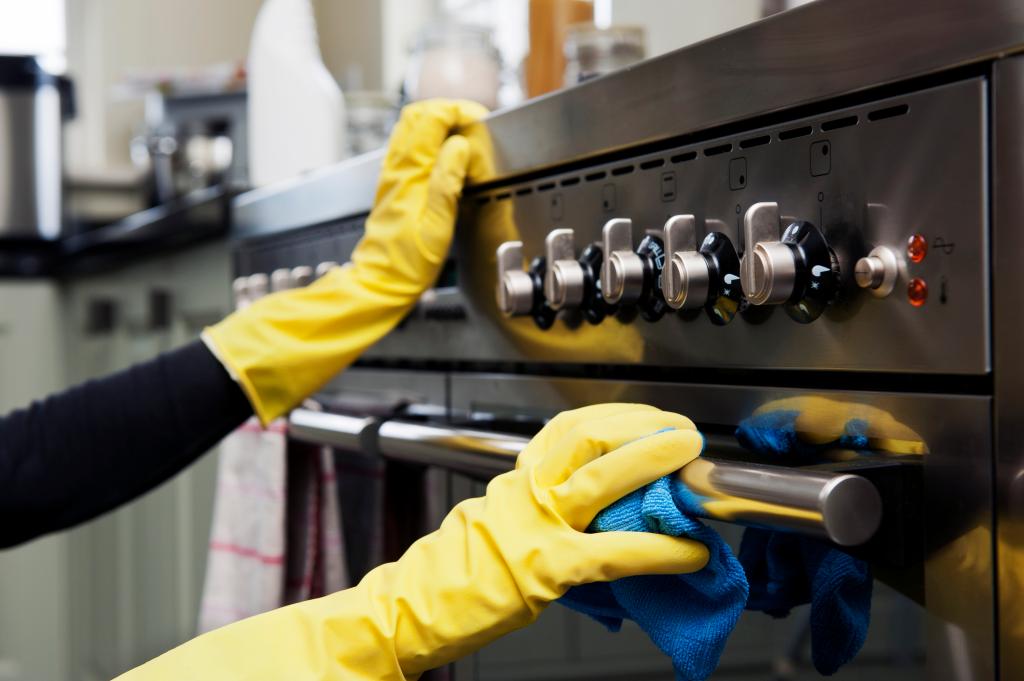These 5 overlooked areas of your kitchen are serving up the most germs
What’s on the menu? Germs, according to experts.
Harmful bacteria could be lurking in your kitchen and your dinner could come with a side of health risks if you’re not careful.
Here’s a list of the top five dirtiest places in your kitchen and a little about how to keep them cleaner.
Refrigerator meat and vegetable compartments
Not cleaning your refrigerator is very uncool.
Your refrigerator vegetable and meat drawers could be hosting pathogens like salmonella, listeria, Salmonella, E.coli, yeast and mold, according to a study from the National Sanitation Foundation study.
The foundation recommended people store produce on a separate shelf above raw meat, poultry and seafood.
To clean the vegetable and meat compartments they say that people should remove the drawer and then use a clean sponge or cloth to wash the drawer with mild detergent and warm water.
They then suggest using a baking soda solution to keep orders at bay.
Cleaning should happen monthly or if any spilled meat juices are present.
Rosemary Trout, program director of culinary arts and food science at Drexel University, told Delish that the drawers should be kept at temperatures below 41 degrees Fahrenheit since “cold temperatures slow bacteria growth.”
The kitchen sink
The kitchen sink’s reputation for being one of the riskiest areas of the kitchen is owed to its role as a catchall for both cooked and uncooked food scraps, particularly raw meat.
A buildup of gunk in your sinks called biofilm could be the culprit behind your lingering cough, cold and even ear infection, according to experts.
Biofilm doesn’t only smell bad — it could be hazardous, leading to infections of listeria, salmonella, E. coli, MRSA and Legionnaires, per Plumbworld.
“Eventually, that biofilm may even be big enough to break off and get onto your food or dishes,” University of Arizona College of Public Health microbiologist Kelly Reynolds told Prevention.
Sponges, rags and cleaning brushes
Cleaning your dishes after each meal is a no-brainer, but are you cleaning your cleaning supplies too?
Your kitchen sponge could have as much bacteria as the inside of a toilet, according to a study published in Scientific Reports.
Jennifer Quinlan, a microbiologist at Drexel University told NPR the following ways to keep sponges clean: Keep sponges away from raw meat, Replace your sponge every two weeks and clean your sponge every few days by putting in the dishwater in a heated dry cycle or wetting it and putting it in the microwave for a minute
“It doesn’t sterilize the sponge,” she says. “But remember, the bacteria we want to kill are the ones that will make you sick.”
Spice jars
The spice jar will add more than just flavor to your food if you’re not careful.
A study from November 2022 published in the Journal of Food Protection found that the space jar had the highest level of cross-contamination in home kitchens.
That’s because people tend to grab spices after handling raw meat or vegetables stored in contaminated drawers.
“Sometimes people sprinkle a dried spice from a jar with hands that have just handled raw food product,” Trout told Delish.
Experts recommend cleaning the outside of spice jars with hot soapy water and measuring spices in containers before handling raw meat.
Door handles and knobs
Don’t be a knob — clean your handles dials and doorknobs.
People frequently touch kitchen surfaces with their dirty hands and they too can harbor dangerous bacteria like listeria, salmonella, staphylococcus and norovirus.
If the surfaces are textured there can be even more bacteria.
Trout told Delish to wash handles and knobs daily with hot soapy water.

















